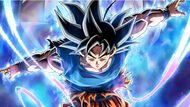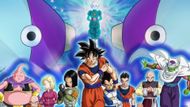When anyone first talks about starting the Dragon Ball franchise, there is a mix of curiosity and dread. Especially when it came to me, because fans talk about it like it was the holy grail of shonen anime. But as much as I wanted to experience it for myself, one thing kept holding me back: it just felt too big to start now.
If I am honest about what I understood about this series is that Dragon Ball is not just an anime. It is a cultural titan that has been around since the 1980s. There are hundreds of episodes spanning across multiple series: Dragon Ball, Dragon Ball Z, Dragon Ball GT, Dragon Ball Super, and even movies and specials sprinkled in between.
Therefore, when someone likes me, wants to start being part of the fandom, the first problem we face is finding the correct watch order. It is genuinely overwhelming, and then there is the list of the cast. Goku is the face of the franchise, but the deeper you go, the more characters you uncover, others like Vegeta, Gohan, Trunks, Piccolo, Frieza, Cell, Buu, Beerus.
Each one seems to come with its own lore, transformations, and battles that longtime fans can recite like gospel. But for someone new, trying to make sense of who everyone is and how they fit into the larger story feels like playing catch-up in a game that is already halfway over.

And yet, despite all this, I understand the appeal. The story of Dragon Ball is inspiring. It is about breaking limits, about fighting for your friends, about becoming stronger not just in power, but in character.
But being a newcomer, all of this feels intimidating. The fanbase is passionate, and that is fascinating to witness a series creating a culture like no other. Although if I am to walk up to them and ask a simple question, suddenly you have got ten people debating canon, filler, and timelines like it’s a thesis defense.
Still, I haven’t given up. I think what I have come to accept is that I don’t have to “get it all” right away. Maybe I’ll start with a movie. Maybe I’ll pick an arc that interests me and go from there. I have realized that watching Dragon Ball doesn’t have to be an all-or-nothing deal. There’s no shame in taking it slow or skipping around to see what clicks.
Disclaimer: This article contains the writer's opinion. Readers’ discretion is advised.
Why is Dragon Ball worth the intimidation?

As overwhelming as this series can be, there is a reason it’s still worth diving into: it’s incredibly motivating. At its core, this anime is about perseverance. Characters train until they collapse, push themselves past physical and emotional limits, and get back up again every single time they’re knocked down.
Goku doesn’t win because he is the strongest; he wins because he never stops trying to become stronger, not for ego, but to protect others. That message hits hard, no matter your age or where you are in life.
And finally, I need to talk about the animation style. Even during the initial release, the raw energy of the fights, the explosive power surges, and the intense facial expressions were unforgettable.
That blend of motivational storytelling and unforgettable visual style is exactly why it is still worth watching, even if it takes some effort to get into. Once you are in, you realize it’s more than just hype. It’s a visual and emotional adrenaline shot straight to the heart.
Final Thoughts
I feel that while the series might look intimidating, especially for newcomers. But above all, the message that the series wants to relay hits hard, no matter your age or where you are in life. And whether I take that journey from the very beginning or jump in somewhere mid-battle, the point is that I start. The rest will fall into place with time.
